Abstract
Crude splenic nuclear fractions can incite skin transplantation immunity in mice without producing a detectable titre of haemagglutinins or haemolysins, and have little if any power to absorb antibodies from sera in which they have been caused to appear by other means. Antigenic preparations of other kinds can incite iso-antibody formation unaccompanied by transplantation immunity. Thus humoral iso-antibodies can be present when transplantation immunity is absent and absent when it is present. Transplantation immunity and serum antibody production probably depend upon different immunological processes, even if they eventually prove to be elicited by antigens with the same or similar determinant groups.
Full text
PDF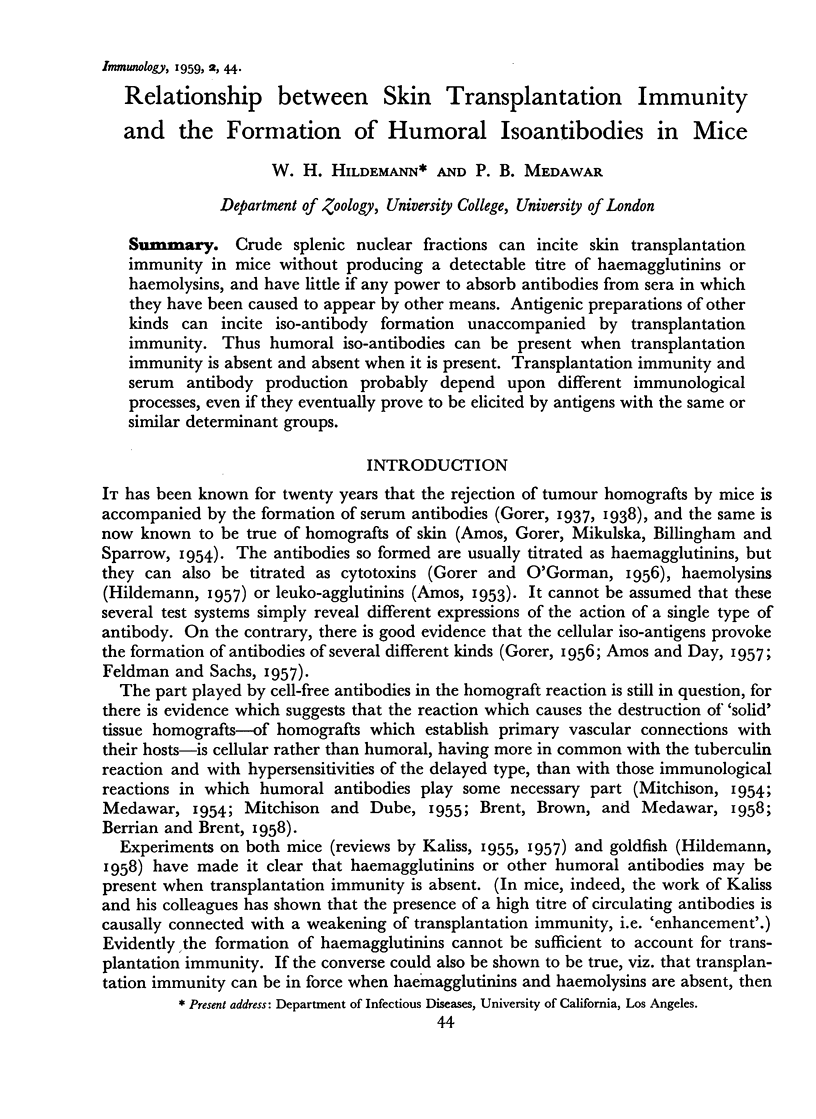
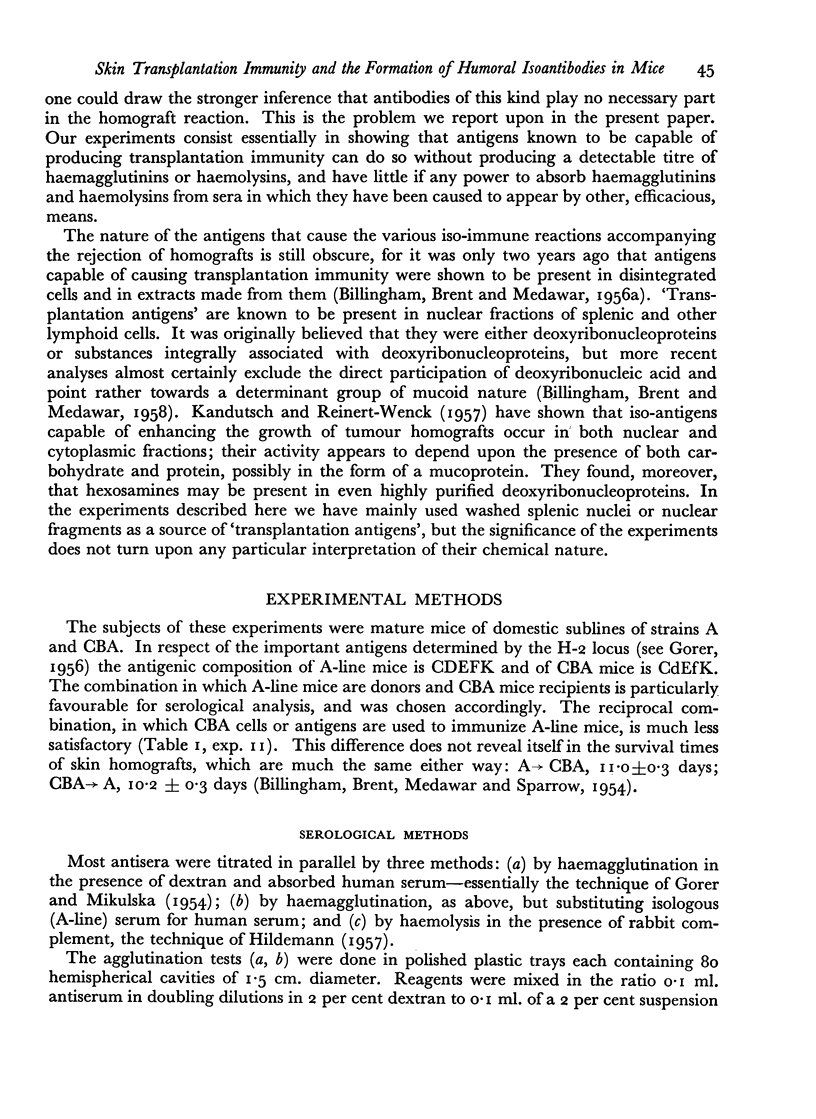

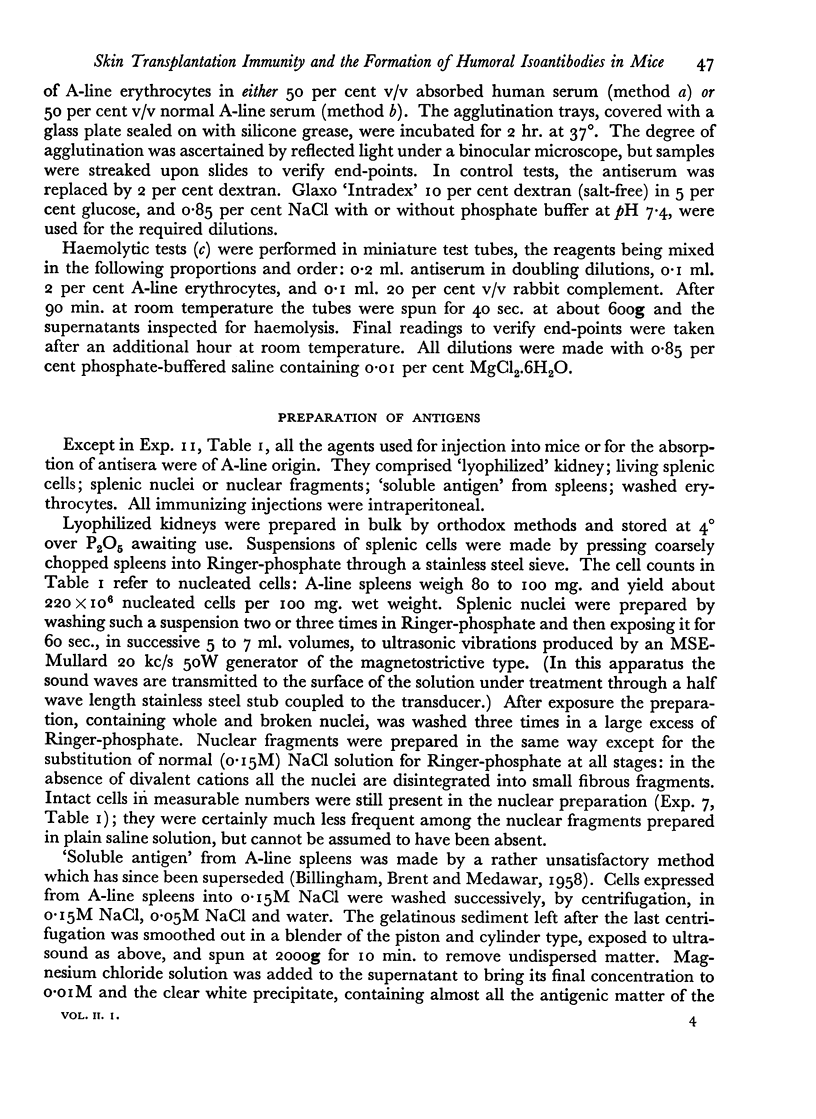
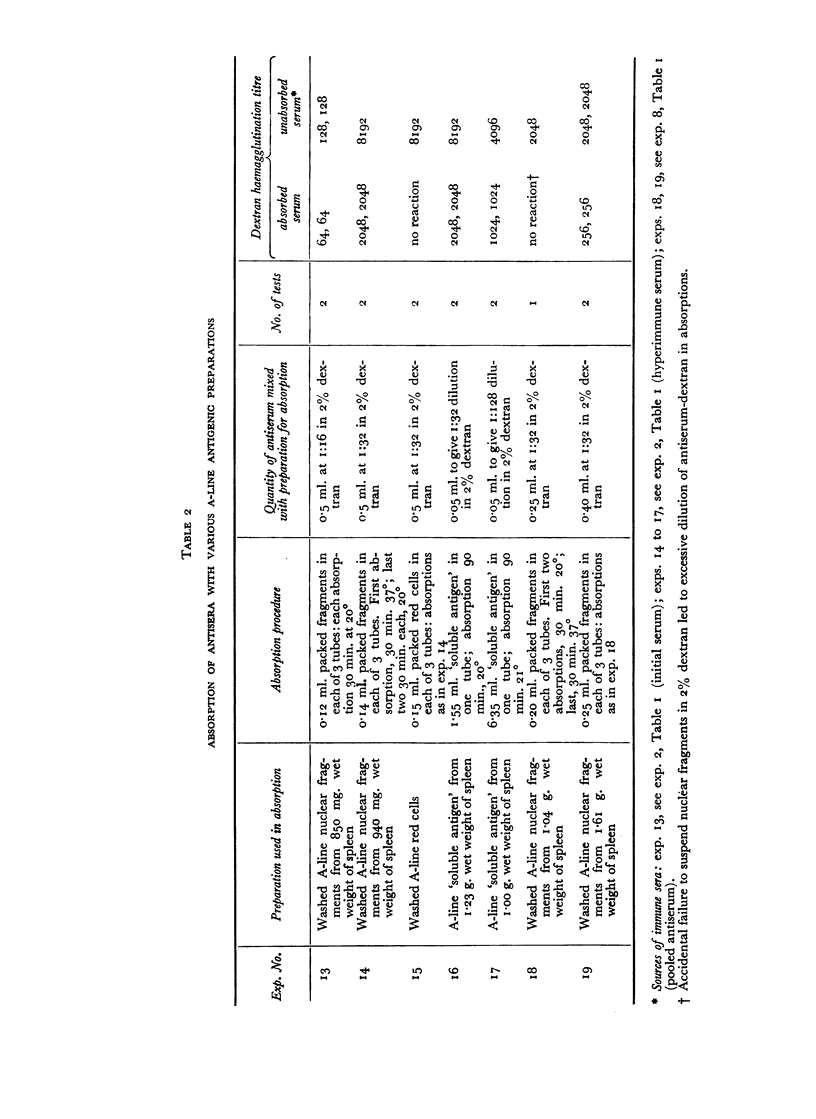
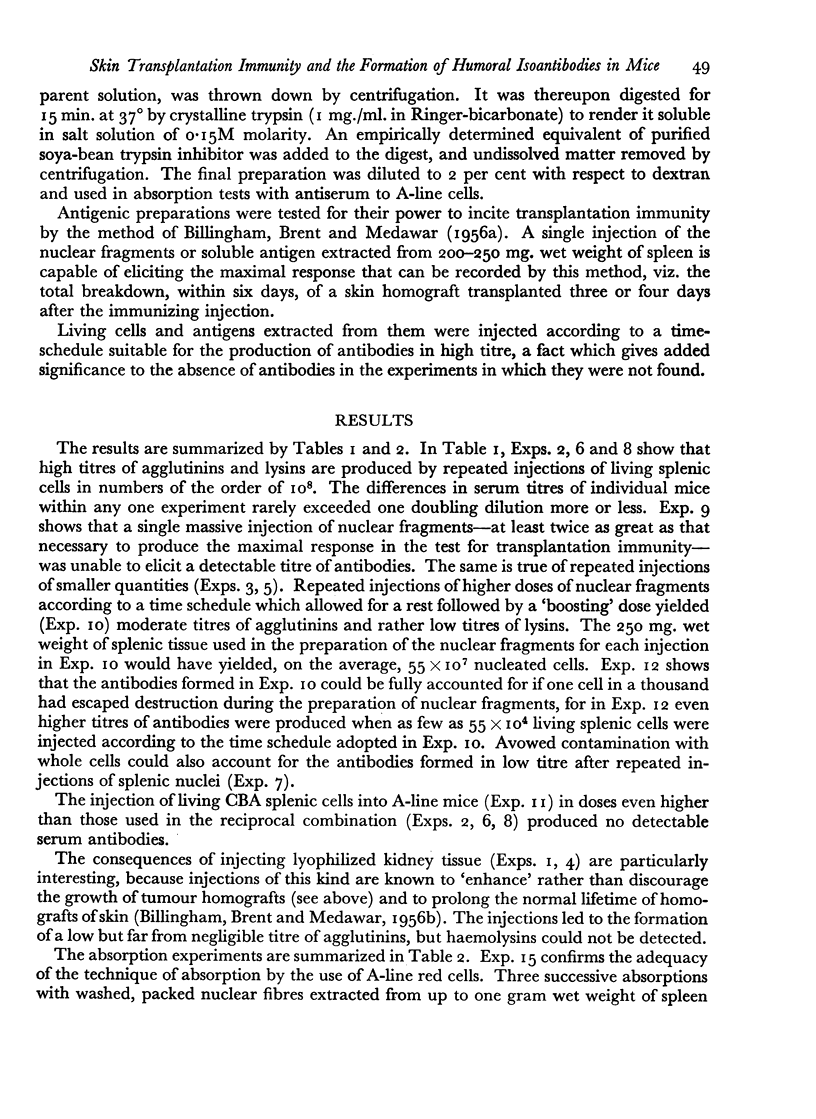
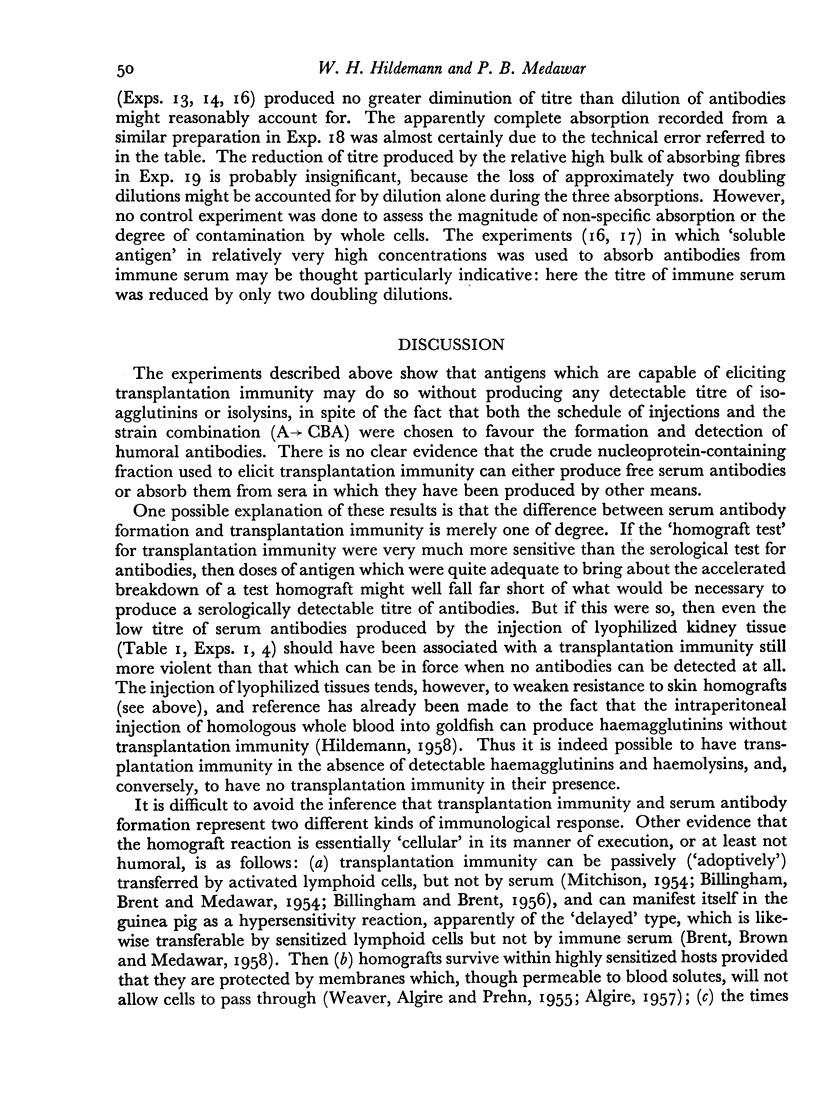
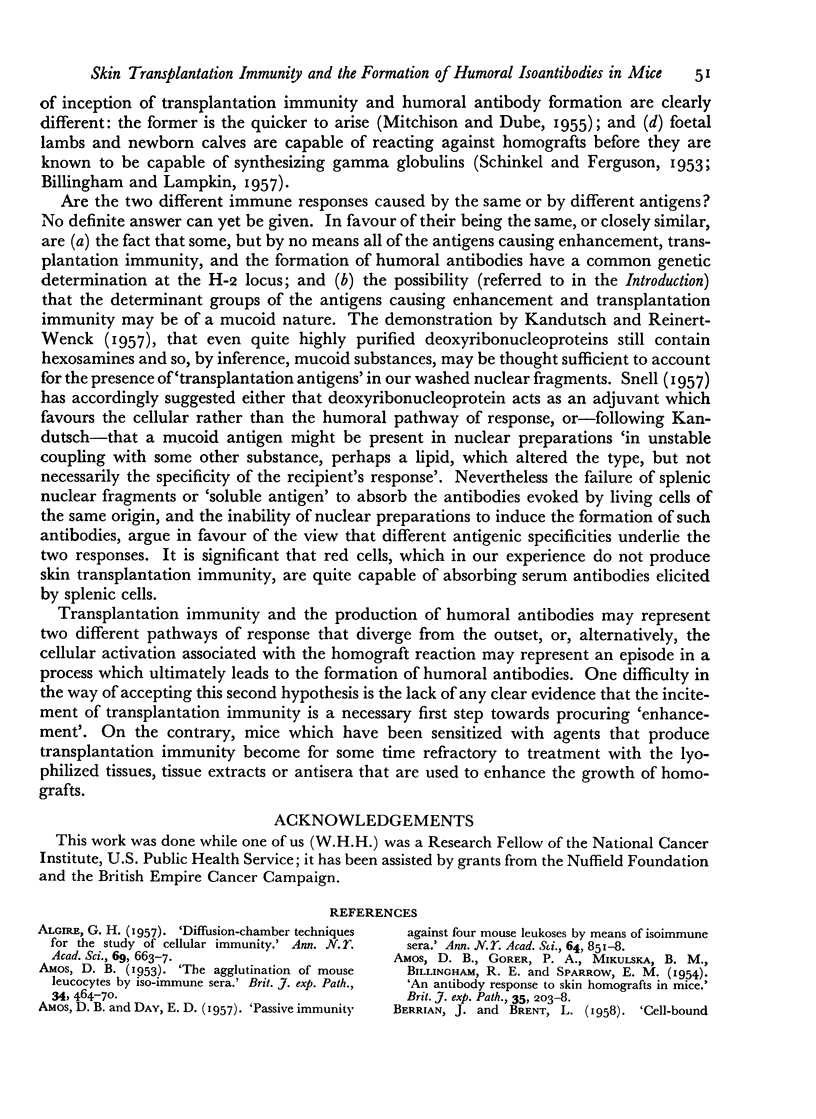
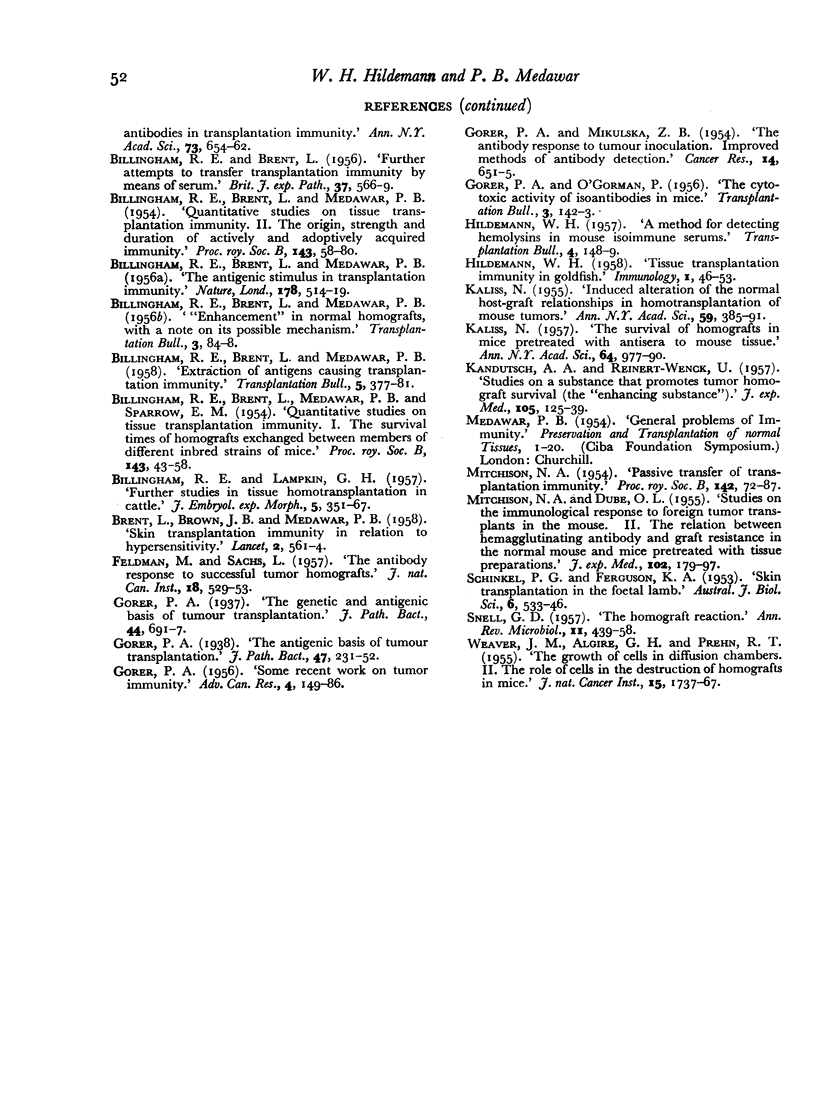
Selected References
These references are in PubMed. This may not be the complete list of references from this article.
- ALGIRE G. H. Diffusion-chamber techniques for studies of cellular immunity. Ann N Y Acad Sci. 1957 Dec 16;69(4):663–667. doi: 10.1111/j.1749-6632.1957.tb49705.x. [DOI] [PubMed] [Google Scholar]
- BERRIAN J. H., BRENT L. Cell-bound antibodies in transplantation immunity. Ann N Y Acad Sci. 1958 Oct 7;73(3):654–662. doi: 10.1111/j.1749-6632.1959.tb40841.x. [DOI] [PubMed] [Google Scholar]
- BILLINGHAM R. E., BRENT L. Further attempts to transfer transplantation immunity by means of serum. Br J Exp Pathol. 1956 Dec;37(6):566–569. [PMC free article] [PubMed] [Google Scholar]
- BILLINGHAM R. E., BRENT L., MEDAWAR P. B. Extraction of antigens causing transplantation immunity. Transplant Bull. 1958 Oct;5(4):377–381. doi: 10.1097/00006534-195810000-00034. [DOI] [PubMed] [Google Scholar]
- BILLINGHAM R. E., BRENT L., MEDAWAR P. B. Quantitative studies on tissue transplantation immunity. II. The origin, strength and duration of actively and adoptively acquired immunity. Proc R Soc Lond B Biol Sci. 1954 Dec 15;143(910):58–80. doi: 10.1098/rspb.1954.0054. [DOI] [PubMed] [Google Scholar]
- BILLINGHAM R. E., BRENT L., MEDAWAR P. B. The antigenic stimulus in transplantation immunity. Nature. 1956 Sep 8;178(4532):514–519. doi: 10.1038/178514a0. [DOI] [PubMed] [Google Scholar]
- BRENT L., BROWN J., MEDAWAR P. B. Skin transplantation immunity in relation to hypersensitivity. Lancet. 1958 Sep 13;2(7046):561–564. doi: 10.1016/s0140-6736(58)90202-2. [DOI] [PubMed] [Google Scholar]
- GORER P. A. Some recent work on tumor immunity. Adv Cancer Res. 1956;4:149–186. doi: 10.1016/s0065-230x(08)60724-1. [DOI] [PubMed] [Google Scholar]
- HILDEMANN W. H. A method for detecting hemolysins in mouse isoimmune serums. Transplant Bull. 1957 Oct;4(4):148–149. [PubMed] [Google Scholar]
- KALISS N. Induced alteration of the normal host-graft relationships in homotransplantation of mouse tumors. Ann N Y Acad Sci. 1955 Jan 24;59(3):385–393. doi: 10.1111/j.1749-6632.1955.tb45952.x. [DOI] [PubMed] [Google Scholar]
- KALISS N. The survival of homografts in mice pretreated with antisera to mouse tissue. Ann N Y Acad Sci. 1957 Mar 22;64(5):977-90; discussion, 990-3. doi: 10.1111/j.1749-6632.1957.tb52489.x. [DOI] [PubMed] [Google Scholar]
- KANDUTSCH A. A., REINERT-WENCK U. Studies on a substance that promotes tumor homograft survival (the enhancing substance); its distribution and some properties. J Exp Med. 1957 Feb 1;105(2):125–139. doi: 10.1084/jem.105.2.125. [DOI] [PMC free article] [PubMed] [Google Scholar]
- MITCHISON N. A. Passive transfer of transplantation immunity. Proc R Soc Lond B Biol Sci. 1954 Feb 18;142(906):72–87. doi: 10.1098/rspb.1954.0007. [DOI] [PubMed] [Google Scholar]
- SNELL G. D. The homograft reaction. Annu Rev Microbiol. 1957;11:439–458. doi: 10.1146/annurev.mi.11.100157.002255. [DOI] [PubMed] [Google Scholar]


